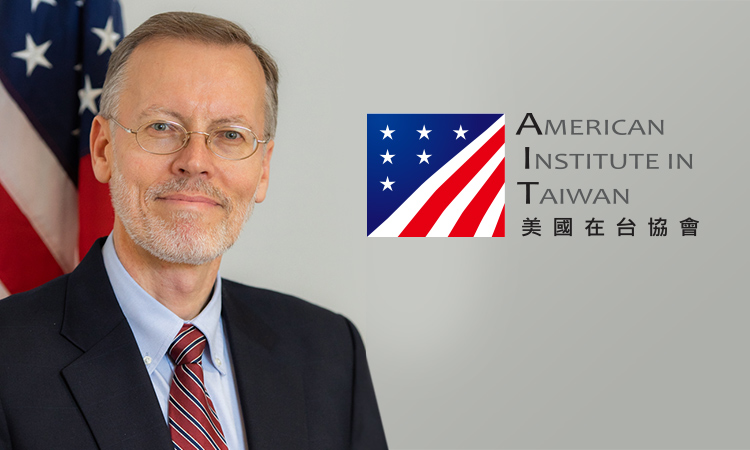AIT Official Text# OT-1927
May 24, 2019
Remarks by AIT Director W. Brent Christensen
at the Opening of Exchange Opportunities Day
May 24, 2019
(As Prepared for Delivery)
Good afternoon, everyone! Thank you all for coming. It is my great pleasure to welcome you to AIT’s new home. You are all special guests – in fact, you are among some of our very first guests since we moved into the new AIT building earlier this month. So I thank you all for coming to help us christen this room, where we hope to hold many more public events.
As many of you are aware, this year marks the 40th Anniversary of AIT. In 1979, before most of you were born, the United States Congress passed a law called the Taiwan Relations Act, committing the United States to maintaining strong ties with Taiwan. Together as partners, the United States and Taiwan have come a long way in the past 40 years, with many achievements worth celebrating. To celebrate our partnership, each month we are highlighting a different aspect of the U.S.-Taiwan relationship. May is our AIT@40 Immigration & Exchange Month, and today’s program is all about exchanges. Exchanges are one of the areas where the United States and Taiwan cooperate the most closely; it is also a topic that is personally meaningful to me.
When I was around your age, I came to Taiwan for the first time to serve as a missionary. It was an eye-opening experience, and I learned for the first time how people from very different backgrounds can connect through shared experience, bond over shared values, and build lasting bonds. Usually all of this occurs over a bowl of Niú ròu miàn! The people I met, the places I saw, and the things I learned during those two years had a strong impact on my life and career – if truth be told, I have basically spent much of my professional career trying to find ways to come back here! This is my fourth time living and working in Taiwan. I returned to Taiwan for a summer as a graduate student, and after joining the Foreign Service, came to Taiwan on my first assignment in 1989. I returned yet again in 2012 as the Deputy Director of AIT. But since I am now the AIT Director, I have run out of jobs I can get here, so if you have any ideas for how I can keep coming back later, please let me know!
As you plan for your future, I hope you will consider studying or participating in an exchange program in the United States, and that you will reap the same rewards I did during my earlier years in Taiwan. It is not a secret that studying and gaining practical experience in the United States can create opportunities. That is why more than 22,000 students from Taiwan study in the United States each year, and that number has been increasing for four years in a row. Today, we are highlighting the very best examples of how education and exchange in the United States can lead to great careers. We are honored to have Jamie, Renee, Tracy, Tim, Lisa, and Tyler join us today, to share their stories about how exchanges have contributed to not only to their success, but that of Taiwan. I would like to thank our guests for their help in promoting U.S.-Taiwan exchange, which is key to our strong people-to-people ties. As you listen to our speakers today, I hope you will also pay attention to how they have used their skills gained in the United States to make contributions here in Taiwan.
To help promote more academic and professional exchange, in cooperation with Fulbright Taiwan, AIT has recently launched the “Talent Circulation Alliance.” For decades, Taiwan has been one of our closest economic and commercial partners. Much of Taiwan’s industry was established by people who studied or worked in the United States and came back to found or work in some of Taiwan’s most successful companies. A very large percentage of Taiwan’s most senior government leaders, including the President and many ministers, have all studied or worked in the United States. Taiwan’s history shows one of the best ways to succeed in Taiwan is to gain experience in the United States and bring back what you have learned. The goal of the Talent Circulation Alliance is to recreate this story for the digital age.
We make a clear distinction between brain drain and brain circulation. Brain drain is a serious problem for Taiwan’s long-term development. If Taiwan’s top talent leaves and never comes back, it represents a net loss for Taiwan, and frankly for the world. In contrast, talent circulation is a win for all involved – it’s a win for those individuals circulating between the different economies because they gain valuable experience; it’s a win for other countries, such as the United States, who are able to benefit from Taiwan’s top talent; and it’s a win for Taiwan which is able to build up its international connections with the rest of the world. And it is a win for strengthening the overall U.S.-Taiwan relationship.
In 2019, we have a chance to look back at what the United States and Taiwan have achieved together over the past 40 years. This is also a time for us to look forward. Talking to students always reminds me of the great possibilities for the United States and Taiwan that are yet to come. I hope you will enjoy the discussion today, and that you will draw inspiration from our speakers, so that one day you will be the shining examples of success and inspiration to the next generation. Thank you once again for joining us today.
















![Video Thumbnail [Recovered]-01](../wp-content/uploads/sites/269/Video-Thumbnail-Recovered-01-1-750x450.jpg)





